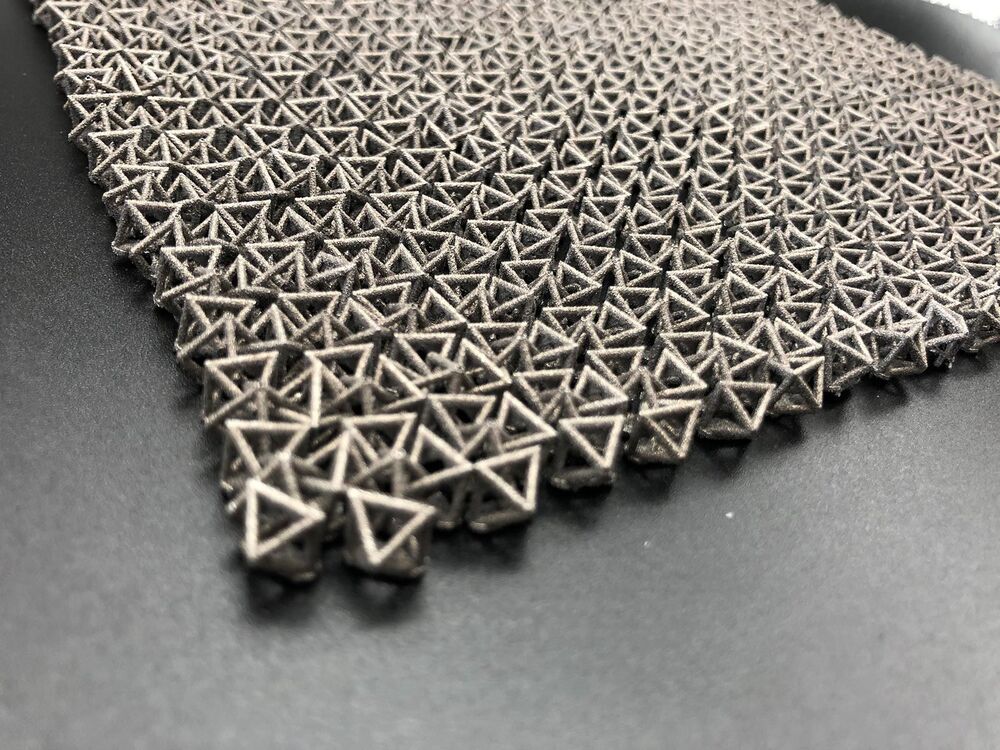Richard Branson’s Virgin Galactic’s VSS Unity just performed a successful spaceflight. Watch highlights from the mission and Spaceport America right here.


3D printed rockets save on up front tooling, enable rapid iteration, decrease part count, and facilitate radically new designs. For your chance to win 2 seats on one of the first Virgin Galactic flights to Space and support a great cause, go to https://www.omaze.com/veritasium.
Thanks to Tim Ellis and everyone at Relativity Space for the tour!
https://www.relativityspace.com/
https://youtube.com/c/RelativitySpace.
Special thanks to Scott Manley for the interview and advising on aerospace engineering.
Check out his channel: https://www.youtube.com/user/szyzyg.
▀▀▀▀▀▀▀▀▀▀▀▀▀▀▀▀▀▀▀▀▀▀▀▀▀▀
References:
Benson, T. (2021). Rocket Parts. NASA. — https://ve42.co/RocketParts.
Boen, B. (2009). Winter Wonder: Rocket Icicles. NASA. — https://ve42.co/EngineIcicles.
Hall, N. (2021). Rocket Thrust Equation. NASA. — https://ve42.co/RocketEqn.
SPACE STATION CREW DISCUSSES LIFE IN SPACE WITH STUDENTS AT U.S EMBASSY IN BULGARIA
Aboard the International Space Station, Expedition 65 Flight Engineers Mark Vande Hei of NASA and Thomas Pesquet of ESA (European Space Agency) discussed life and work aboard the complex during an in-flight event July 26 where they answered pre-recorded questions from students. Vande Hei and Pesquet launched within weeks of each other in April on Russian Soyuz and SpaceX Crew Dragon vehicles respectively for their missions on the orbital outpost.
Join me as I take a tour of SpaceX’s Starbase facility with Elon Musk as our tour guide! This is part 2 of 3 so stay tuned, there’s another one coming!
If you need some notes on this video with key points, check out our article — https://everydayastronaut.com/starbase-tour-and-interview-with-elon-musk/
Need a rundown on Starship? I’ve got you covered with our “Complete Guide to Starship“
https://youtu.be/-8p2JDTd13k.
00:00 — Intro.
00:45 — Tent 1 // Raptors.
05:00 — Failure and the Space Shuttle.
08:35 — Launch Escape Systems.
10:50 — Tent 2
13:00 — Heat Shield Talk.
16:20 — 1st Orbital Test.
26:26 — Tent 3 // Nose Cones.
37:40 — S20 Nose Cone // Reentry.
51:00 — 69.420
54:00 — Grid Fin talk / Control Authority.
59:55 — Outro.
Want to support what I do? Consider becoming a Patreon supporter for access to exclusive livestreams, our discord channel and subreddit! — http://patreon.com/everydayastronaut.
Extra special thanks to our Mission Directors! — Nam Nguyen, iluli by Mike Lamb, Scott Ferreira, Phil Easter, Peter Jordan, Nick Williams, Tyler Silcott, Mark Krieger, Roger Oldfield, PEDER HALSEIDE, Roberto Cordon, Benjamin Holland, Scott Maley, Robin Haerens, Rob Nunn, James and Becky Carter, Tim Engle, Taron Lexton, Chris Meleg, Corey Coddington, Chris LaClair, Peter F Maher, Steve Kemp, Vincent Argiro, Lars Nielsen (Denmark), IMAJIN, Nick 0 David A. Greer, Frans de Wet, Chad Souter, Sam Fisher, Arthur Carty, Lawrence Mansour, DLB, Chris Dibbs, David Glover, Max Haot, Ares Lovlyn, John Malkin, TTTA 0 Seth Pascale, Jared smith, Simon Pilkington, Héctor Ramos, Alejandro 0 Tomdmay 0 Mac Malkawi, Manalope 0 Tristan Edwards, NSS North Houston Space Society.

According to Musk, “Starbase is moving at Warp 9” as SpaceX prepare for the first orbital demonstration of the Starship/Super Heavy stack. It is going to be an absolute monster topping out at 120 meters, almost 10 meters taller than the mighty Saturn V.
Although largely a demonstration mission, Musk has said that it will carry a “wheel of cheese.” This was also the first payload of the company’s Dragon spacecraft. It was chosen because it was the silliest thing they could imagine.




Engineers at Caltech and JPL
The Jet Propulsion Laboratory (JPL) is a federally funded research and development center managed for NASA by the California Institute of Technology (Caltech). The laboratory’s primary function is the construction and operation of planetary robotic spacecraft, though it also conducts Earth-orbit and astronomy missions. It is also responsible for operating NASA’s Deep Space Network. JPL implements programs in planetary exploration, Earth science, space-based astronomy and technology development, while applying its capabilities to technical and scientific problems of national significance.
3D printed rockets save on up front tooling, enable rapid iteration, decrease part count, and facilitate radically new designs. For your chance to win 2 seats on one of the first Virgin Galactic flights to Space and support a great cause, go to https://www.omaze.com/veritasium.
Thanks to Tim Ellis and everyone at Relativity Space for the tour!
https://www.relativityspace.com/
https://youtube.com/c/RelativitySpace.
Special thanks to Scott Manley for the interview and advising on aerospace engineering.
Check out his channel: https://www.youtube.com/user/szyzyg.
▀▀▀▀▀▀▀▀▀▀▀▀▀▀▀▀▀▀▀▀▀▀▀▀▀▀
References:
Benson, T. (2021). Rocket Parts. NASA. — https://ve42.co/RocketParts.
Boen, B. (2009). Winter Wonder: Rocket Icicles. NASA. — https://ve42.co/EngineIcicles.
Hall, N. (2021). Rocket Thrust Equation. NASA. — https://ve42.co/RocketEqn.